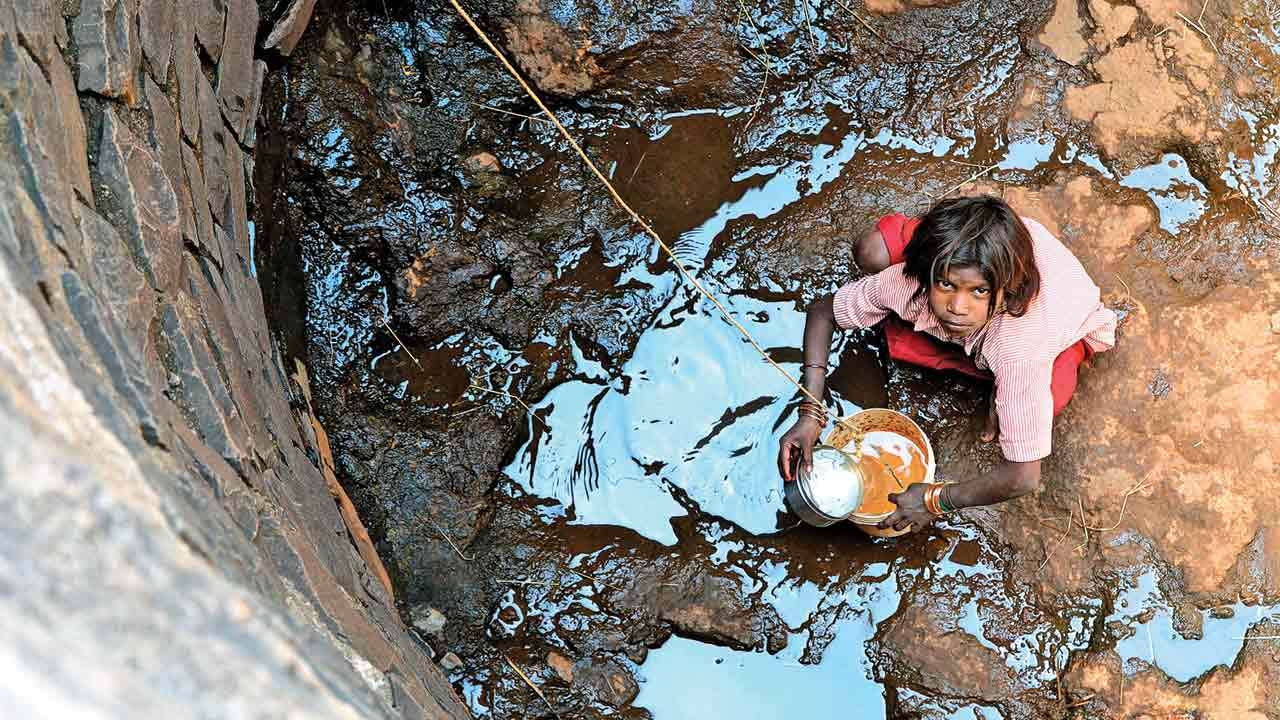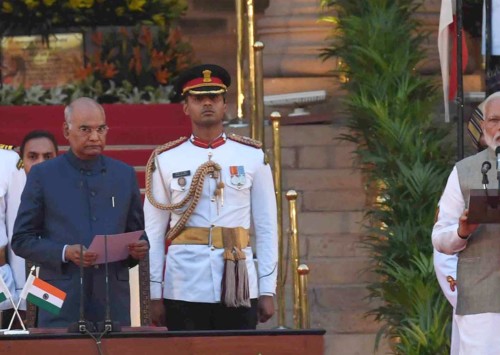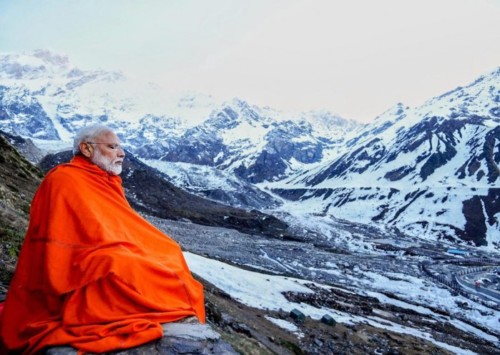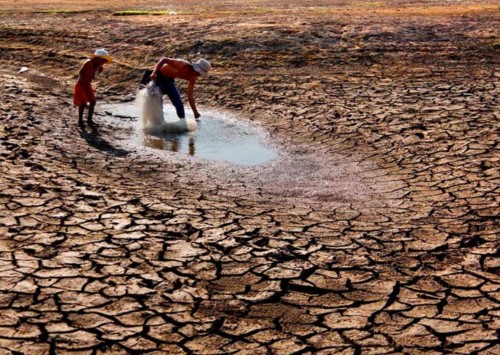Worsening state of water crisis in India

With soaring temperatures affecting humans, livestock, crops, this is the worst water crisis that India is experiencing in its history.
With most of the cities in India facing acute water shortage, the government needs to come up with immediate measures and meticulous strategy to bring the country out of this problem.
Hundreds of people lined up on the streets with three to four cans and plastic containers, waiting for hours in the scorching heat for the water tankers to arrive, have become an everyday sight in Chennai, says Neha Singh, a resident of Srinivasa Nagar, Maduravoyal in the west of Chennai, while talking to Media India Group.
With soaring temperatures affecting the lives of people, livestock, crops, India is experiencing one of the worst droughts in its history. Chennai is one of the most affected cities as it is experiencing its worst water crisis in 30 years, and headed to becoming a Zero City.
“The Porur Lake in Chennai, considered one of the main sources of water, has reached its lowest level. I have never seen the lake without water in my entire life and now it has dried out with the surface area all cracked up due to scarcity of water,” says Neha who has been living in Chennai for the past 27 years.
“Eight out of ten houses in our area are drilling bore wells to a certain extent but there is no sign of water. Even though we practice rain water harvesting but that is of no use since there has been no rain since three years,” adds Neha.
Residents of Velachery in southern Chennai and several other areas are buying water through water suppliers for which they have to make a booking in advance prior a month and are paying double or triple the amount that they earlier used to. “Earlier I had to pay INR 2000 for a tanker to deliver water but now I pay triple the cost, that is INR 6000 for them to deliver water to our house,” says Jayakumar Mukundan another resident of Chennai, to Media India Group.
All the four reservoirs that supply drinking water to the city have dipped far below the zero level and today hold not even one percent of their capacity. Chennai is now critically dependent on its three mega water desalination plants with a combined capacity of 180 million litres daily (MLD), and the units are working overtime to remain at least 80-90 pc efficient.
The condition is so bad in the state that companies are asking their employees to work from home since they have run out of water. But the companies that still want its employees to come to office are providing them with recycled waters. “Our office is using recycled waters but the quality of the water is really bad. The recycled water has an unusual taste and smell to it,” says Neha who works in an MNC in Chennai.
Many people who stay in rented apartments have been asked to relocate by the landowners. “Some of my colleagues have asked their families to move to their native houses in other states because of the water crisis they are facing. There are also few who have been asked by the owners to evacuate as there is not enough water,” she further adds.
However, the crisis is not just limited to Chennai.
The central government last month issued a “drought advisory” to Maharashtra, Gujarat, Karnataka, Andhra Pradesh, Telangana and Tamil Nadu, asking them to use water judiciously.
The advisory was issued after water storage in dams dropped to a ‘critical’ level. The water reservoir levels in all states of the southern and western regions are significantly lower than the 10-year average — which is considered the ‘normal’ level.
Worst drought
As of 10 June, around 44 pc of the country was affected by various degrees of drought, due to a heatwave that has seen Delhi record its highest ever June temperature of 48℃. Similarly in Churu, a city in the north Indian state of Rajasthan, the temperature reached more than 50℃, making it one of the hottest places on earth.
Only a fourth of Indian households have drinking water at home, and about 200,000 people die each year due to inadequate supply or water contamination.
According to a 2018 report by NITI Aayog, a policy think tank for the Indian government, around 600 million people are dealing with high-to-extreme water shortages. The report also stated that 21 major cities (Delhi, Bengaluru, Chennai, Hyderabad and others) are racing to reach zero groundwater levels by 2020, affecting access for 100 million people. This number will likely continue increasing, as the United Nations recently estimated that India’s population will surge by almost 300 million by 2050, and it will become the world’s most populous country.
However, 12 pc of India’s population is already living the ‘Day Zero’ scenario, due to excessive groundwater pumping, an inefficient and wasteful water management system and years of deficient rains. The Niti Aayog report also states that by 2030, the country’s water demand is projected to be twice the available supply, implying severe water scarcity for hundreds of millions of people and an eventual six per cent loss in the country’s GDP.
An analysis of the water levels in 91 reservoirs across India as of June 15 showed that in 85 of them, the water level is below 40 pc of the capacity and in 65 it is below 20 pc. Only two out of 17 dams in Maharashtra hold more than 25 pc of water capacity. Seven are at zero percent. Similarly the Ukai dam, which supplies water to Gujarat’s Surat city, holds only 3 pc of its capacity. And with a cyclone drifting away from the Gujarat coast, the slow pace of the monsoon has raised concerns.
The devastating effect of climate change is altering global weather patterns, with distressing consequences for the farmers, whose livelihoods depend on successfully harvesting crops. Rising temperatures increase the severity and frequency of droughts, as well as other extreme weather events like floods, tropical cyclones and dust storms.
Around 80 pc of the water that reaches households, leaves as waste and pollutes our waterbodies and environment. Since India mainly relies on groundwater for its water needs, instead of traditional water harvesting systems, decades of drilling into the earth to reach water has led to severe ground water depletion.
The growing water scarcity each year has naturally not just affected human lives but has had devastated crops in certain regions. Since India is an agrarian economy and production of grains requires a lot of water, excess water consumption for food production depletes the overall water table. According to experts wrong cropping pattern also contributes to water crisis.
In Maharashtra, the western state of India, the government has calculated that the state’s winter foodgrain output for 2018-19 has fallen by 63 pc compared to the previous winter, output of cereals has fallen by 68 pc, pulses by 51 pc, oilseeds 70 pc, wheat 61 pc, maize 75 pc and sesame 92 pc.
However, even when there is scarcity of water in Marathwada, a small region in Maharashtra, the sugarcane production is still at an all time high. Agriculture department records say that sugar production went up to 92.720 million tonne in 2018-19 compared with 83.134 million tonne in the previous year. It is well known that sugarcane consumes a disproportionate amount of water and water-stressed regions must make an effort to move away from the crop.
Need for immediate measures
Environmentalist Vimlendu Jha suggests that the country needs initiatives like rainwater harvesting, smart water management, efficient agricultural practices, the health of water bodies, and immediate focus on the reality of climate change as simple steps of averting the water crisis.
Also Israel in an effort to help India recover from the drought situation has expressed its keenness to share its experience in dealing with desertification and water management, in which it is a world leader. Israel, with over 60 pc of its territory being a desert and another 20 pc semi-arid land, has developed a variety of solutions to desertification through desert agriculture, irrigation, desalination, aquaculture, afforestation and management of water resources. Israel is one of the world’s leading nations in desert technologies and methods of dealing with desertification.
“As part of our growing partnership with India, Israel is keen to work together and share all its experience and cutting edge technology in our joint fight against desertification, including a strategic partnership on water management and water security,” said Israeli ambassador to India Ron Malka.
The Union government recently formed a new Jal Shakti (water) ministry, which aims at tackling water issues with a holistic and integrated perspective on the subject. The ministry has announced an ambitious plan to provide piped water connections to every household in India by 2024.
However, it remains unclear what are the people supposed to do before 2024? By laying huge pipeline networks for water supply the government is focusing on the infrastructure but what about the water supply?
The government urgently needs to take measures which lead towards improving water use efficiency, reducing leakages, recharging/restoring local waterbodies as well as applying for higher tariffs and ownership by various stakeholders, if it wants to achieve its target of supplying water to every household.












